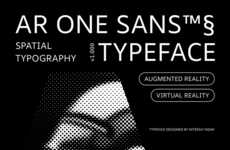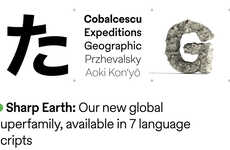
Microsoft Introduces the New ADLaM Display Typeface
Amy Duong — April 30, 2023 — Art & Design
References: click.linksynergy & designtaxi
Microsoft introduces a new ADLaM Display typeface in order to help preserve the culture of the Fulani people in West Africa and the Pulaar language. Unfortunately, it is a language that has not been digitized and is at risk of disappearing. Microsoft works with the creative agency McCann New York to add the language to the company's suite of products. The typeface is dubbed ADLaM Display and it is a digital version of the Pulaar alphabet.
ADLaM Display represents Alkule Dandayde Leñol Mulugol, which translates to “the alphabet that will prevent the culture, the people, from disappearing.” Abdoulaye Barry notes that “ADLaM has increased the chance of the language to survive, even in areas where the language has been dominated. We have our own alphabet! That’s a source of pride. It’s way beyond what we’ve ever imagined.”
Image Credit: Microsoft
ADLaM Display represents Alkule Dandayde Leñol Mulugol, which translates to “the alphabet that will prevent the culture, the people, from disappearing.” Abdoulaye Barry notes that “ADLaM has increased the chance of the language to survive, even in areas where the language has been dominated. We have our own alphabet! That’s a source of pride. It’s way beyond what we’ve ever imagined.”
Image Credit: Microsoft
Trend Themes
1. Preserving Endangered Languages - Companies can create typefaces and digital assets to help preserve languages in danger of disappearing, enabling more people to access and use them for communication and upholding cultural heritage.
2. Inclusive Design for Language Diversity - Designers and companies can create more inclusive products with features for languages beyond the dominant ones, allowing more people from diverse linguistic backgrounds to access products and services.
3. Collaboration with Local Communities - Collaborating with local communities can lead to more inclusive and culturally-sensitive design solutions to better cater to their needs and preserve their cultural heritage.
Industry Implications
1. Technology - The technology industry can develop solutions such as typefaces and digital assets to help preserve endangered languages and promote inclusive design practices.
2. Education - Educational institutions can integrate diverse languages and cultures into their curriculums and tools to promote language learning and cultural inclusion.
3. Language Services - Language services providers can work with communities and companies to create typefaces and digital solutions for languages in danger of disappearing, providing more access and increasing language preservation efforts.
4.4
Score
Popularity
Activity
Freshness















